IPG Photonics Corp. (IPGP) fell 11.4 %, costing 81 basis points as investors continue to be concerned about second half demand from China for the company's precision laser products. From Westport Asset Management (Trades, Portfolio)'s Westport Select Cap Fund Second Quarter 2014 Commentary.Also check out: Westport Asset Management Undervalued Stocks Westport Asset Management Top Growth Companies Westport Asset Management High Yield stocks, and Stocks that Westport Asset Management keeps buying
| Currently 0.00/512345 Rating: 0.0/5 (0 votes) | |

Subscribe via Email

Subscribe RSS Comments Please leave your comment:
More GuruFocus Links
| Latest Guru Picks | Value Strategies |
| Warren Buffett Portfolio | Ben Graham Net-Net |
| Real Time Picks | Buffett-Munger Screener |
| Aggregated Portfolio | Undervalued Predictable |
| ETFs, Options | Low P/S Companies |
| Insider Trends | 10-Year Financials |
| 52-Week Lows | Interactive Charts |
| Model Portfolios | DCF Calculator |
RSS Feed  | Monthly Newsletters |
| The All-In-One Screener | Portfolio Tracking Tool |

MORE GURUFOCUS LINKS
| Latest Guru Picks | Value Strategies |
| Warren Buffett Portfolio | Ben Graham Net-Net |
| Real Time Picks | Buffett-Munger Screener |
| Aggregated Portfolio | Undervalued Predictable |
| ETFs, Options | Low P/S Companies |
| Insider Trends | 10-Year Financials |
| 52-Week Lows | Interactive Charts |
| Model Portfolios | DCF Calculator |
RSS Feed  | Monthly Newsletters |
| The All-In-One Screener | Portfolio Tracking Tool |
IPGP STOCK PRICE CHART

62.95 (1y: +3%) $(function(){var seriesOptions=[],yAxisOptions=[],name='IPGP',display='';Highcharts.setOptions({global:{useUTC:true}});var d=new Date();$current_day=d.getDay();if($current_day==5||$current_day==0||$current_day==6){day=4;}else{day=7;} seriesOptions[0]={id:name,animation:false,color:'#4572A7',lineWidth:1,name:name.toUpperCase()+' stock price',threshold:null,data:[[1375074000000,61.35],[1375160400000,61.9],[1375246800000,60.9],[1375333200000,61.4],[1375419600000,61.37],[1375678800000,60.79],[1375765200000,58.46],[1375851600000,57.54],[1375938000000,57.6],[1376024400000,57.57],[1376283600000,58.06],[1376370000000,57.74],[1376456400000,57.52],[1376542800000,55.74],[1376629200000,55.41],[1376888400000,54.73],[1376974800000,55.65],[1377061200000,55.72],[1377147600000,56.67],[1377234000000,56.64],[1377493200000,56.18],[1377579600000,54.96],[1377666000000,54.86],[1377752400000,54.45],[1377838800000,53.76],[1378184400000,54.54],[1378270800000,56.49],[1378357200000,59.09],[1378443600000,59.14],[1378702800000,60.15],[1378789200000,61.36],[1378875600000,61.05],[1378962000000,61.02],[1379048400000,61.05],[1379307600000,59.56],[1379394000000,59.75],[1379480400000,59.71],[1379566800000,59.6],[1379653200000,57.97],[1379912400000,57.06],[1379998800000,56.73],[1380085200000,57.31],[1380171600000,58.27],[1380258000000,57.33],[1380517200000,56.35],[1380603600000,57.41],[1380690000000,58.36],[1380776400000,58.99],[1380862800000,61.39],[1381122000000,60.44],[1381208400000,59.89],[1381294800000,60.25],[1381381200000,61.12],[1381467600000,61.52],[1381726800000,61.7],[1381813200000,61.4],[1381899600000,61.59],[1381986000000,62.53],[1382072400000,62.58],[1382331600000,63.2],[1382418000000,64.22],[1382504400000,63.05],[1382590800000,62.41],[1382677200000,63.65],[1382936400000,64.27],[1383022800000,64.86],[1383109200000,64.81],[1383195600000,66.27],[1383282000000,60.1],[1383544800000,60.24],[1383631200000,63],[1383717600000,63],[1383804000000,61.98],[1383890400000,64.8],[1384149600000,67.77],[1384236000000,69.68],[1384322400000,69.42],[1384408800000,68.02],[1384495200000,68.26],[1384754400000,70.64],[1384840800000,71.32],[1384927200000,71.27],[1385013600000,71.83],[1385100000000,72.66],[1385359200000,75.1],[1385445600000,73.15],[1385532000000,71.75],[13857048000! 00,72.52],[1385964000000,71.47],[1386050400000,71.44],[1386136800000,70.33],[1386223200000,71.78],[1386309600000,71.53],[1386568800000,71.23],[1386655200000,72.8],[1386741600000,71.63],[1386828000000,71.49],[1386914400000,72.63],[1387173600000,74.33],[1387260000000,75.75],[1387346400000,75.77],[1387432800000
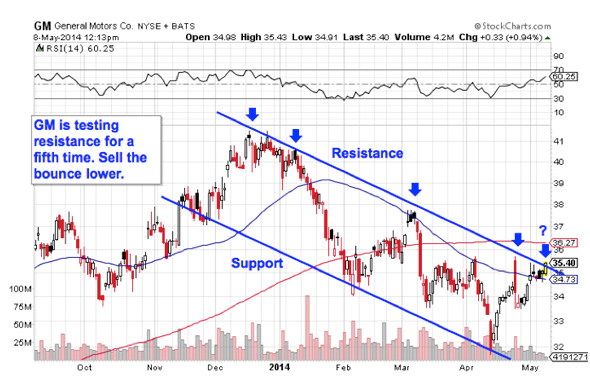
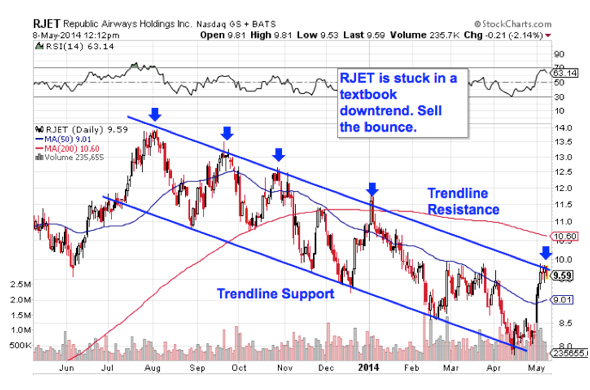
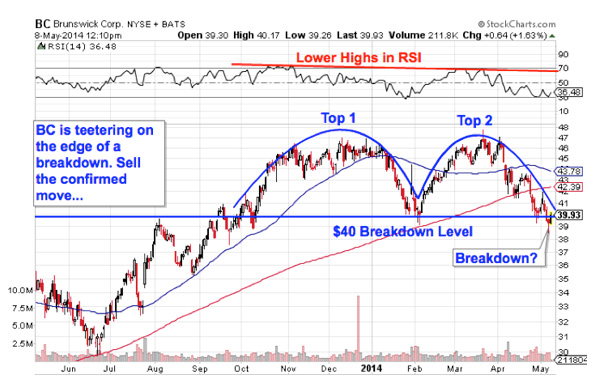
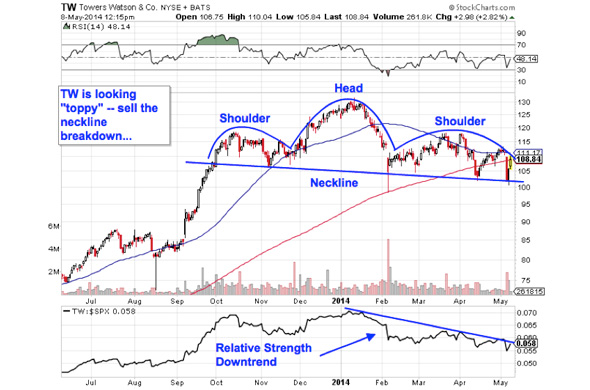
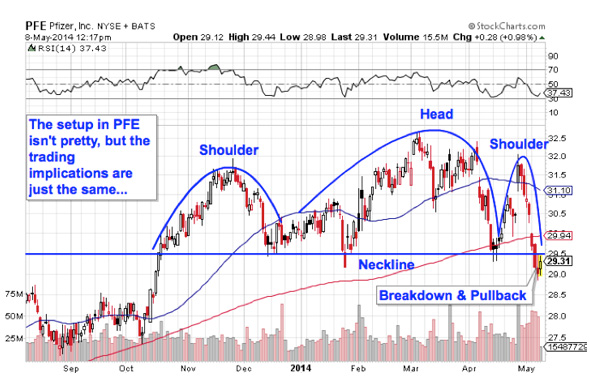

 Richard Drew/AP From Wall Street hoping to close out 2014 with a bang to the top dog in video streaming needing to prove that it's still magnetic to new subscribers, here are some of the things that will help shape the week that lies ahead on Wall Street. Monday -- Let the Sun Shine In The final trading week of the year is always the quietest, and that leaves China Sunergy (CSUN) as one of the few companies that will be making waves. The Chinese maker of solar cells and modules will host its annual shareholder meeting on Tuesday morning in its home market of Nanjing, but that translates into Monday night for stateside investors. There's plenty riding on the meeting. China Sunergy will discuss proposed board changes. Given the steep losses that it's been reporting, it's not a surprise that the stock has cratered in 2014. It will have to restore confidence at its meeting. Tuesday -- The Clock Is Ticking The next-to-last trading day of 2014 will find money managers scrambling to pick up some of the year's biggest winners. It's an unfortunate practice called "window dressing" as fund managers try to make it seem as if they owned the top performers in their year-end reports. It's a silly practice. After all, investors know that performance is everything. Dolling up a list of top portfolio holdings doesn't change where a fund ranks relative to its peers. Investors are smart enough to know that. Wednesday -- Last Call for Subs Wednesday will be a big day for Netflix (NFLX). The leading premium video service tumbled in October after falling short of its forecast for total streaming subscribers at the end of the third quarter. It can't afford to blow it again. Netflix expects to tack on 4 million net new accounts during the final three months of the year, so it had better hope that it winds up with more than 57 million subscribers on its rolls by the end of Wednesday. Thursday -- Auld Lang Syne The market's closed in observance of New Year's Day on Thursday. It will be a clean slate for some of the stocks that were hit hard in 2014, but they will have to wait until Friday to begin trading on the road to redemption in 2015. Friday -- "Black" Friday The big movie opening this weekend will be "The Woman in Black 2: Angel of Death." The original film raked in more than $54 million in domestic ticket sales two years ago. It will be a challenge to top that, especially since the sequel lacks the star power that Daniel Radcliffe brought on the original. More from Rick Aristotle Munarriz
Richard Drew/AP From Wall Street hoping to close out 2014 with a bang to the top dog in video streaming needing to prove that it's still magnetic to new subscribers, here are some of the things that will help shape the week that lies ahead on Wall Street. Monday -- Let the Sun Shine In The final trading week of the year is always the quietest, and that leaves China Sunergy (CSUN) as one of the few companies that will be making waves. The Chinese maker of solar cells and modules will host its annual shareholder meeting on Tuesday morning in its home market of Nanjing, but that translates into Monday night for stateside investors. There's plenty riding on the meeting. China Sunergy will discuss proposed board changes. Given the steep losses that it's been reporting, it's not a surprise that the stock has cratered in 2014. It will have to restore confidence at its meeting. Tuesday -- The Clock Is Ticking The next-to-last trading day of 2014 will find money managers scrambling to pick up some of the year's biggest winners. It's an unfortunate practice called "window dressing" as fund managers try to make it seem as if they owned the top performers in their year-end reports. It's a silly practice. After all, investors know that performance is everything. Dolling up a list of top portfolio holdings doesn't change where a fund ranks relative to its peers. Investors are smart enough to know that. Wednesday -- Last Call for Subs Wednesday will be a big day for Netflix (NFLX). The leading premium video service tumbled in October after falling short of its forecast for total streaming subscribers at the end of the third quarter. It can't afford to blow it again. Netflix expects to tack on 4 million net new accounts during the final three months of the year, so it had better hope that it winds up with more than 57 million subscribers on its rolls by the end of Wednesday. Thursday -- Auld Lang Syne The market's closed in observance of New Year's Day on Thursday. It will be a clean slate for some of the stocks that were hit hard in 2014, but they will have to wait until Friday to begin trading on the road to redemption in 2015. Friday -- "Black" Friday The big movie opening this weekend will be "The Woman in Black 2: Angel of Death." The original film raked in more than $54 million in domestic ticket sales two years ago. It will be a challenge to top that, especially since the sequel lacks the star power that Daniel Radcliffe brought on the original. More from Rick Aristotle Munarriz



 Popular Posts: 3 Under-the-Radar Triple-A Stocks to BuySIRI: Sirius XM’s Signal is Fading Fast4 Reasons Markets May Be Even Better in 2014 Recent Posts: BAC: Time For Caution in Bank of America Stock 2 Stocks That Will Lead Europe Higher in 2014 How to Play Housing Like a Stock Trader View All Posts
Popular Posts: 3 Under-the-Radar Triple-A Stocks to BuySIRI: Sirius XM’s Signal is Fading Fast4 Reasons Markets May Be Even Better in 2014 Recent Posts: BAC: Time For Caution in Bank of America Stock 2 Stocks That Will Lead Europe Higher in 2014 How to Play Housing Like a Stock Trader View All Posts  Source: Flickr
Source: Flickr  Christina Kennedy Many of us are like kids when it comes to squirreling away for retirement. Our more short-term money needs -- like that new car we've been eyeing -- tend to take precedence over long-term saving, causing us to miss out on the benefits of compound growth. The secret to success comes down to self-control, which is the subject of "The Marshmallow Test: Mastering Self-Control," a new book by Columbia University psychologist Walter Mischel. Mischel was the lead scientist behind the iconic "marshmallow test," a series of psychological studies from the 1960s that explored how well the promise of future rewards could motivate preschoolers to control themselves. In a nutshell, Mischel placed marshmallows in front of preschoolers, who were told they could enjoy the treats immediately. But if they waited 15 minutes before indulging, they'd be rewarded with bonus marshmallows. In the end, up to 70 percent of the children couldn't help but gobble up the marshmallow immediately. Fast-forward a few decades: the researchers followed up with the participants and found that the kids who were able to delay gratification were generally more successful, earned higher SAT scores and maintained healthier body-mass indexes. The test became a classic tale of the real-world value of self-control-a concept that Mischel says can be applied to various areas of your life, including retirement. Three money pros share their insights on how to apply four crucial lessons from the experiment to your long-term nest-egg savings strategy. Lesson 1: Visualize Yourself Reaping Future Rewards One of the key reasons why so many of the kids in Mischel's study ate the marshmallow quickly is because they didn't feel a connection to their future selves-the one eating twice the number of marshmallows. And this doesn't appear to be something we outgrow. One Stanford University study measured the brain activity of adults after asking them to think about their present self, a total stranger and themselves 10 years into the future. After comparing the scans, the researchers found that the most similar brain activity happened when someone was thinking about the stranger future self. Translation: The participants thought of their future selves as, essentially, someone they didn't know-which also goes to show how it's possible to dissociate ourselves from our retired lives. "Retirement is a very abstract idea that doesn't resonate with the emotional parts of the brain that actually motivate us to action," explains Brad Klontz, a certified financial planner and clinical psychologist. The Retirement Takeaway According to Mischel, the children in the study who had the self-control to wait were able to do so because they formed a mental image of their future selves enjoying more marshmallows. A similar mind trick can work for grown-ups too. A 2011 study revealed that when undergrads were shown avatars of what they'd look like at retirement age, they decided to devote 30 percent more of their paychecks to their 401(k)s than those shown current images of themselves. Seeing their grayer, wrinklier selves cued the students to think as if retirement was just around the corner, compelling them to act accordingly. You can do the same through creative visualization. "To keep people focused on the future, it helps to have an image of what your retirement will really look like," says Scott Bishop, director of financial planning at STA Wealth Management. "Saving 10 percent of your salary in a 401(k) isn't visual. But being able to take two vacations a year, own a lake house and spend $5,000 per month in today's dollars ." Klontz agrees. "The more vivid and specific you can make the images, the more motivated you will be to achieve your goal," he says. And if you're not sure where to start, begin by asking yourself questions like: Where am I living? What am I doing? Who am I with? Am I traveling the world? Hanging out at a family vacation home? Once you've fleshed out this image, stay focused on what you'd like to achieve by revisiting it frequently, Klontz recommends. "Try placing it on a picture board you keep in your office and see each day," he suggests. "Or meditate on those images and feelings of your ideal retirement." Lesson 2: Steer Clear of Temptation In the study, even the preschoolers knew that "out of sight, out of mind" was the path of least resistance to exercising self-control. As the treats sat in front of them on a tray, "the temptation was great, and it was hellish for the kids to wait," Mischel writes. But when the researchers placed the marshmallows the tray, obscuring them from clear view, self-control came more easily. When it comes to retirement, your paycheck is akin to that marshmallow: The easier you have access to your money, the more likely you'll want to spend it to satisfy your more immediate wants. The simplest way to troubleshoot this temptation? Keep any money earmarked for retirement out of the checking account that you use to cover day-to-day bills. The Retirement Takeaway "If you can set aside money before it lands in your bank, you won't take it into account when you make spending decisions," Klontz says. Of course, the most obvious way to put that into motion is to participate in a company 401(k), so contributions are automatically deducted from your paycheck. Or set up an automatic transfer to your IRA every month, if your employer doesn't offer a 401(k). Klontz suggests implementing another rule of thumb: Whenever you receive a windfall, such as a raise or a bonus, automatically kick a portion of it to your retirement savings before mixing it into your checking. You can apply the same rule to other "found money," like your tax refund or the cash-back rewards from your credit card, notes Christina Povenmire, a certified financial planner at CMP Financial Planning in Ohio. Once you get into the habit of saving, it'll get a lot easier to compartmentalize the uses for your money, as opposed to viewing it as all up for grabs. In fact, the preschoolers who exhibited self-control adopted a similar strategy: Even when they did have a marshmallow in front of them, they mentally removed the temptation by pretending the treats they were looking at were just pictures. The participants who told themselves the marshmallows were fake were able to wait as long as 18 minutes-while most children failed after just six. In other words, pretending part of your paycheck was never game for spending in the first place-by automatically diverting it toward your financial goals-can make saving easier. Lesson 3: Get Happier About What You Already Have Many of Mischel's successful subjects employed an interesting tactic that helped them stave off their marshmallow cravings: They were able to physically and mentally distract themselves by focusing on the positive things that surrounded them. Just before beginning the experiment, the researchers encouraged one group of children to brainstorm fun thoughts or memories of happiness. Some examples were as simple as being pushed on a swing by their moms-but the effect on their self-control was astonishing. "When happy thoughts were suggested, children waited for more than 10 minutes, on average -- even when the rewards were exposed," Mischel writes. At other points during the study, they took to singing and playing by themselves-anything not to have to think about the sweet treat. "Don't look at what you are waiting for," one 9-year-old wrote at the end of the study. "Use what you have at the moment to entertain yourself." The Retirement Takeaway So how do we practice the preschoolers' wisdom in the day-to-day? Financial pros recommend harnessing the power of a simple gratitude journal, or an ongoing list of the people, experiences and things you are thankful for. What you jot down can be as simple as the invigorating morning run you had with your dog or the peppermint latte you enjoyed for an afternoon pick-me-up. These small but invaluable experiences can have a positive effect on your money by encouraging delayed gratification. In one Northeastern University study, participants who reflected on experiences that made them feel grateful were as much as 12 percent more likely to forgo receiving $55 up front, in exchange for $85 in three months. Practicing the power of gratitude can also be achieved through what psychology experts call "savoring" your spending, or prolonging positive emotional experiences. "It's so easy to keep buying things," Povenmire says. "The key is to focus on the stuff you've already got rather than think about that next new purchase." So the next time you get an itch for an iPhone 6, take a moment to look at the Tuscan vacation photos on your perfectly good iPhone 5 -- you'll not only feel better but you will have saved yourself a few hundred dollars that could then be funneled into your retirement savings. Telling yourself no to every single indulgence can actually lessen your ability to use self-control the next time you come across a temptation. Lesson 4: Reward Yourself -- Within Reason To most people, self-control probably conjures up feelings of deprivation and denial. But rewarding yourself now and then can be an effective strategy for staying on track with your goals. Mischel chalks this up to the "tired will." "Self-control is like a muscle," he writes. "When you actively exert volitional effort, 'ego depletion' occurs, and the muscle soon becomes fatigued." In other words, constantly telling yourself no to every single indulgence can actually your ability to exercise self-control the next time temptation crosses your path. "Everyone has to allow something in their budget that makes them feel good," Povenmire says. But what's the fine line between treating yourself ... and getting waylaid on your way to paving a financial future? The Retirement Takeaway Bishop recommends what he calls "backing into your budget," or setting up dedicated contributions toward your expenses and priority goals first-and then allowing yourself to enjoy the rest guilt-free. It's as simple as taking your monthly take-home pay and then subtracting your fixed costs (things like your rent or cell phone bill), goal contributions (such as retirement or emergency savings) and non-monthly savings contributions (money to, say, cover holiday gifts or home maintenance). The leftover amount is called your flex-spending number, which you can use on whatever you'd like. And since you know you've already covered your big financial goals, you won't feel guilty spending that money-which means you get to have your marshmallow and eat it too. More from LearnVest
Christina Kennedy Many of us are like kids when it comes to squirreling away for retirement. Our more short-term money needs -- like that new car we've been eyeing -- tend to take precedence over long-term saving, causing us to miss out on the benefits of compound growth. The secret to success comes down to self-control, which is the subject of "The Marshmallow Test: Mastering Self-Control," a new book by Columbia University psychologist Walter Mischel. Mischel was the lead scientist behind the iconic "marshmallow test," a series of psychological studies from the 1960s that explored how well the promise of future rewards could motivate preschoolers to control themselves. In a nutshell, Mischel placed marshmallows in front of preschoolers, who were told they could enjoy the treats immediately. But if they waited 15 minutes before indulging, they'd be rewarded with bonus marshmallows. In the end, up to 70 percent of the children couldn't help but gobble up the marshmallow immediately. Fast-forward a few decades: the researchers followed up with the participants and found that the kids who were able to delay gratification were generally more successful, earned higher SAT scores and maintained healthier body-mass indexes. The test became a classic tale of the real-world value of self-control-a concept that Mischel says can be applied to various areas of your life, including retirement. Three money pros share their insights on how to apply four crucial lessons from the experiment to your long-term nest-egg savings strategy. Lesson 1: Visualize Yourself Reaping Future Rewards One of the key reasons why so many of the kids in Mischel's study ate the marshmallow quickly is because they didn't feel a connection to their future selves-the one eating twice the number of marshmallows. And this doesn't appear to be something we outgrow. One Stanford University study measured the brain activity of adults after asking them to think about their present self, a total stranger and themselves 10 years into the future. After comparing the scans, the researchers found that the most similar brain activity happened when someone was thinking about the stranger future self. Translation: The participants thought of their future selves as, essentially, someone they didn't know-which also goes to show how it's possible to dissociate ourselves from our retired lives. "Retirement is a very abstract idea that doesn't resonate with the emotional parts of the brain that actually motivate us to action," explains Brad Klontz, a certified financial planner and clinical psychologist. The Retirement Takeaway According to Mischel, the children in the study who had the self-control to wait were able to do so because they formed a mental image of their future selves enjoying more marshmallows. A similar mind trick can work for grown-ups too. A 2011 study revealed that when undergrads were shown avatars of what they'd look like at retirement age, they decided to devote 30 percent more of their paychecks to their 401(k)s than those shown current images of themselves. Seeing their grayer, wrinklier selves cued the students to think as if retirement was just around the corner, compelling them to act accordingly. You can do the same through creative visualization. "To keep people focused on the future, it helps to have an image of what your retirement will really look like," says Scott Bishop, director of financial planning at STA Wealth Management. "Saving 10 percent of your salary in a 401(k) isn't visual. But being able to take two vacations a year, own a lake house and spend $5,000 per month in today's dollars ." Klontz agrees. "The more vivid and specific you can make the images, the more motivated you will be to achieve your goal," he says. And if you're not sure where to start, begin by asking yourself questions like: Where am I living? What am I doing? Who am I with? Am I traveling the world? Hanging out at a family vacation home? Once you've fleshed out this image, stay focused on what you'd like to achieve by revisiting it frequently, Klontz recommends. "Try placing it on a picture board you keep in your office and see each day," he suggests. "Or meditate on those images and feelings of your ideal retirement." Lesson 2: Steer Clear of Temptation In the study, even the preschoolers knew that "out of sight, out of mind" was the path of least resistance to exercising self-control. As the treats sat in front of them on a tray, "the temptation was great, and it was hellish for the kids to wait," Mischel writes. But when the researchers placed the marshmallows the tray, obscuring them from clear view, self-control came more easily. When it comes to retirement, your paycheck is akin to that marshmallow: The easier you have access to your money, the more likely you'll want to spend it to satisfy your more immediate wants. The simplest way to troubleshoot this temptation? Keep any money earmarked for retirement out of the checking account that you use to cover day-to-day bills. The Retirement Takeaway "If you can set aside money before it lands in your bank, you won't take it into account when you make spending decisions," Klontz says. Of course, the most obvious way to put that into motion is to participate in a company 401(k), so contributions are automatically deducted from your paycheck. Or set up an automatic transfer to your IRA every month, if your employer doesn't offer a 401(k). Klontz suggests implementing another rule of thumb: Whenever you receive a windfall, such as a raise or a bonus, automatically kick a portion of it to your retirement savings before mixing it into your checking. You can apply the same rule to other "found money," like your tax refund or the cash-back rewards from your credit card, notes Christina Povenmire, a certified financial planner at CMP Financial Planning in Ohio. Once you get into the habit of saving, it'll get a lot easier to compartmentalize the uses for your money, as opposed to viewing it as all up for grabs. In fact, the preschoolers who exhibited self-control adopted a similar strategy: Even when they did have a marshmallow in front of them, they mentally removed the temptation by pretending the treats they were looking at were just pictures. The participants who told themselves the marshmallows were fake were able to wait as long as 18 minutes-while most children failed after just six. In other words, pretending part of your paycheck was never game for spending in the first place-by automatically diverting it toward your financial goals-can make saving easier. Lesson 3: Get Happier About What You Already Have Many of Mischel's successful subjects employed an interesting tactic that helped them stave off their marshmallow cravings: They were able to physically and mentally distract themselves by focusing on the positive things that surrounded them. Just before beginning the experiment, the researchers encouraged one group of children to brainstorm fun thoughts or memories of happiness. Some examples were as simple as being pushed on a swing by their moms-but the effect on their self-control was astonishing. "When happy thoughts were suggested, children waited for more than 10 minutes, on average -- even when the rewards were exposed," Mischel writes. At other points during the study, they took to singing and playing by themselves-anything not to have to think about the sweet treat. "Don't look at what you are waiting for," one 9-year-old wrote at the end of the study. "Use what you have at the moment to entertain yourself." The Retirement Takeaway So how do we practice the preschoolers' wisdom in the day-to-day? Financial pros recommend harnessing the power of a simple gratitude journal, or an ongoing list of the people, experiences and things you are thankful for. What you jot down can be as simple as the invigorating morning run you had with your dog or the peppermint latte you enjoyed for an afternoon pick-me-up. These small but invaluable experiences can have a positive effect on your money by encouraging delayed gratification. In one Northeastern University study, participants who reflected on experiences that made them feel grateful were as much as 12 percent more likely to forgo receiving $55 up front, in exchange for $85 in three months. Practicing the power of gratitude can also be achieved through what psychology experts call "savoring" your spending, or prolonging positive emotional experiences. "It's so easy to keep buying things," Povenmire says. "The key is to focus on the stuff you've already got rather than think about that next new purchase." So the next time you get an itch for an iPhone 6, take a moment to look at the Tuscan vacation photos on your perfectly good iPhone 5 -- you'll not only feel better but you will have saved yourself a few hundred dollars that could then be funneled into your retirement savings. Telling yourself no to every single indulgence can actually lessen your ability to use self-control the next time you come across a temptation. Lesson 4: Reward Yourself -- Within Reason To most people, self-control probably conjures up feelings of deprivation and denial. But rewarding yourself now and then can be an effective strategy for staying on track with your goals. Mischel chalks this up to the "tired will." "Self-control is like a muscle," he writes. "When you actively exert volitional effort, 'ego depletion' occurs, and the muscle soon becomes fatigued." In other words, constantly telling yourself no to every single indulgence can actually your ability to exercise self-control the next time temptation crosses your path. "Everyone has to allow something in their budget that makes them feel good," Povenmire says. But what's the fine line between treating yourself ... and getting waylaid on your way to paving a financial future? The Retirement Takeaway Bishop recommends what he calls "backing into your budget," or setting up dedicated contributions toward your expenses and priority goals first-and then allowing yourself to enjoy the rest guilt-free. It's as simple as taking your monthly take-home pay and then subtracting your fixed costs (things like your rent or cell phone bill), goal contributions (such as retirement or emergency savings) and non-monthly savings contributions (money to, say, cover holiday gifts or home maintenance). The leftover amount is called your flex-spending number, which you can use on whatever you'd like. And since you know you've already covered your big financial goals, you won't feel guilty spending that money-which means you get to have your marshmallow and eat it too. More from LearnVest Reuters
Reuters 

 ) announced that it has received a $6 billion order for 60 of its 737 aircraft.
) announced that it has received a $6 billion order for 60 of its 737 aircraft. 
 Matt Rourke/AP Gas is cheap! And U.S. retailers are cheering. Over the past six months, global oil prices have fallen 45 percent. Gas prices are plunging in tandem (sort of), with the price of petrol off more than 30 percent over the same time period. And to hear the pundits tell it, that must mean good things for retail store sales this year -- and perhaps retailer stocks year. After all, if all you had in your wallet in June was $50 and a hankering to go shopping, that might have been enough to fill up your gas tank and get you to the store -- but you'd have no money left to shop with. By Black Friday, though, that same tankful of gas cost only $40 -- and it's just $35 today. All of which suggests that this Christmas season, shoppers should have significantly more post-gas station cash in their wallets. Big Savings = Big Spending? For a while, that's how things seemed to be working out. While "Black Friday" numbers weren't all that had been hoped for, retail sales for all of November climbed 5 percent over November 2013 levels. And the good times could keep on rolling. Citing data from the National Retail Federation, the Los Angeles Times recently reported that with spending on gas purchases down 0.8 percent year over year, Black Friday spending on electronics and appliances was up an almost-equal 0.9 percent. Department store sales rose a full 1 percent, building materials and garden supplies jumped 1.4 percent, and overall, spending increased in 11 out of 13 categories. Quoting an analyst at the Economist Intelligence Unit, the Times predicted that if gas prices continue to fall, U.S. consumers could save as much as $100 billion on their automotive fuel bills next year. As much as "half of that windfall" could be pumped into the consumer economy. Nearer-term, Experian (EXPN) Consumer Services (a unit of the credit ratings giant) just issued a report showing that 36 percent of shoppers expect to spend more this holiday season than last, versus only 25 percent who expect to cut back on spending. On average, Experian found that shoppers are planning to spend about $758 apiece on Christmas presents, up 5 percent from last year. Big Numbers and Littler Numbers But hold on just a sec -- gas is 30 percent cheaper, but retail sales were up only percent in November? And Experian's saying the whole holiday shopping season will see only a similar 5 percent rise? Maybe we shouldn't look a gift horse in the mouth, but a 5 percent shift in shopping patterns doesn't seem like a lot to get excited about, relative to the big drop in gasoline. So what's going on? The answer could be that, according to the Bureau of Labor and Statistics' Consumer Expenditure Survey, the average U.S. household spent about $2,600 on gasoline in 2013. On one hand, that was near an all-time high for gasoline costs. On the other hand, it amounts to only about 5 percent of U.S. median household income ($51,900 in 2013, according to the Census Bureau). As a result, even when gasoline prices fall 30 percent or more, this only adds, at most, 1.5 percent (30 percent of 5 percent) of household income to the average shopper's total disposable income. And if The Economist is right, and only half these gas savings will make it into the consumer economy -- then we're talking about just a fraction of 1 percent of household income becoming true disposable income. Where Does the Money Go? What's more, according to gas price information specialist GasBuddy.com, even The Economist's view might be too rosy: "A GasBuddy survey of more than 100,000 respondents finds that 83 percent of us say we will save or pay off debt with the extra savings, while only 14 percent say we'll spend it on holiday presents." So is it possible that retail sales will jump like the analysts predict, generating a big boom in consumer spending and leading to massive profits for investors in retail stocks? Sure, it's possible. But so far, it doesn't seem to be happening. More from Rich Smith
Matt Rourke/AP Gas is cheap! And U.S. retailers are cheering. Over the past six months, global oil prices have fallen 45 percent. Gas prices are plunging in tandem (sort of), with the price of petrol off more than 30 percent over the same time period. And to hear the pundits tell it, that must mean good things for retail store sales this year -- and perhaps retailer stocks year. After all, if all you had in your wallet in June was $50 and a hankering to go shopping, that might have been enough to fill up your gas tank and get you to the store -- but you'd have no money left to shop with. By Black Friday, though, that same tankful of gas cost only $40 -- and it's just $35 today. All of which suggests that this Christmas season, shoppers should have significantly more post-gas station cash in their wallets. Big Savings = Big Spending? For a while, that's how things seemed to be working out. While "Black Friday" numbers weren't all that had been hoped for, retail sales for all of November climbed 5 percent over November 2013 levels. And the good times could keep on rolling. Citing data from the National Retail Federation, the Los Angeles Times recently reported that with spending on gas purchases down 0.8 percent year over year, Black Friday spending on electronics and appliances was up an almost-equal 0.9 percent. Department store sales rose a full 1 percent, building materials and garden supplies jumped 1.4 percent, and overall, spending increased in 11 out of 13 categories. Quoting an analyst at the Economist Intelligence Unit, the Times predicted that if gas prices continue to fall, U.S. consumers could save as much as $100 billion on their automotive fuel bills next year. As much as "half of that windfall" could be pumped into the consumer economy. Nearer-term, Experian (EXPN) Consumer Services (a unit of the credit ratings giant) just issued a report showing that 36 percent of shoppers expect to spend more this holiday season than last, versus only 25 percent who expect to cut back on spending. On average, Experian found that shoppers are planning to spend about $758 apiece on Christmas presents, up 5 percent from last year. Big Numbers and Littler Numbers But hold on just a sec -- gas is 30 percent cheaper, but retail sales were up only percent in November? And Experian's saying the whole holiday shopping season will see only a similar 5 percent rise? Maybe we shouldn't look a gift horse in the mouth, but a 5 percent shift in shopping patterns doesn't seem like a lot to get excited about, relative to the big drop in gasoline. So what's going on? The answer could be that, according to the Bureau of Labor and Statistics' Consumer Expenditure Survey, the average U.S. household spent about $2,600 on gasoline in 2013. On one hand, that was near an all-time high for gasoline costs. On the other hand, it amounts to only about 5 percent of U.S. median household income ($51,900 in 2013, according to the Census Bureau). As a result, even when gasoline prices fall 30 percent or more, this only adds, at most, 1.5 percent (30 percent of 5 percent) of household income to the average shopper's total disposable income. And if The Economist is right, and only half these gas savings will make it into the consumer economy -- then we're talking about just a fraction of 1 percent of household income becoming true disposable income. Where Does the Money Go? What's more, according to gas price information specialist GasBuddy.com, even The Economist's view might be too rosy: "A GasBuddy survey of more than 100,000 respondents finds that 83 percent of us say we will save or pay off debt with the extra savings, while only 14 percent say we'll spend it on holiday presents." So is it possible that retail sales will jump like the analysts predict, generating a big boom in consumer spending and leading to massive profits for investors in retail stocks? Sure, it's possible. But so far, it doesn't seem to be happening. More from Rich Smith



 MORE GURUFOCUS LINKS
MORE GURUFOCUS LINKS  62.95 (1y: +3%) $(function(){var seriesOptions=[],yAxisOptions=[],name='IPGP',display='';Highcharts.setOptions({global:{useUTC:true}});var d=new Date();$current_day=d.getDay();if($current_day==5||$current_day==0||$current_day==6){day=4;}else{day=7;} seriesOptions[0]={id:name,animation:false,color:'#4572A7',lineWidth:1,name:name.toUpperCase()+' stock price',threshold:null,data:[[1375074000000,61.35],[1375160400000,61.9],[1375246800000,60.9],[1375333200000,61.4],[1375419600000,61.37],[1375678800000,60.79],[1375765200000,58.46],[1375851600000,57.54],[1375938000000,57.6],[1376024400000,57.57],[1376283600000,58.06],[1376370000000,57.74],[1376456400000,57.52],[1376542800000,55.74],[1376629200000,55.41],[1376888400000,54.73],[1376974800000,55.65],[1377061200000,55.72],[1377147600000,56.67],[1377234000000,56.64],[1377493200000,56.18],[1377579600000,54.96],[1377666000000,54.86],[1377752400000,54.45],[1377838800000,53.76],[1378184400000,54.54],[1378270800000,56.49],[1378357200000,59.09],[1378443600000,59.14],[1378702800000,60.15],[1378789200000,61.36],[1378875600000,61.05],[1378962000000,61.02],[1379048400000,61.05],[1379307600000,59.56],[1379394000000,59.75],[1379480400000,59.71],[1379566800000,59.6],[1379653200000,57.97],[1379912400000,57.06],[1379998800000,56.73],[1380085200000,57.31],[1380171600000,58.27],[1380258000000,57.33],[1380517200000,56.35],[1380603600000,57.41],[1380690000000,58.36],[1380776400000,58.99],[1380862800000,61.39],[1381122000000,60.44],[1381208400000,59.89],[1381294800000,60.25],[1381381200000,61.12],[1381467600000,61.52],[1381726800000,61.7],[1381813200000,61.4],[1381899600000,61.59],[1381986000000,62.53],[1382072400000,62.58],[1382331600000,63.2],[1382418000000,64.22],[1382504400000,63.05],[1382590800000,62.41],[1382677200000,63.65],[1382936400000,64.27],[1383022800000,64.86],[1383109200000,64.81],[1383195600000,66.27],[1383282000000,60.1],[1383544800000,60.24],[1383631200000,63],[1383717600000,63],[1383804000000,61.98],[1383890400000,64.8],[1384149600000,67.77],[1384236000000,69.68],[1384322400000,69.42],[1384408800000,68.02],[1384495200000,68.26],[1384754400000,70.64],[1384840800000,71.32],[1384927200000,71.27],[1385013600000,71.83],[1385100000000,72.66],[1385359200000,75.1],[1385445600000,73.15],[1385532000000,71.75],[13857048000! 00,72.52],[1385964000000,71.47],[1386050400000,71.44],[1386136800000,70.33],[1386223200000,71.78],[1386309600000,71.53],[1386568800000,71.23],[1386655200000,72.8],[1386741600000,71.63],[1386828000000,71.49],[1386914400000,72.63],[1387173600000,74.33],[1387260000000,75.75],[1387346400000,75.77],[1387432800000
62.95 (1y: +3%) $(function(){var seriesOptions=[],yAxisOptions=[],name='IPGP',display='';Highcharts.setOptions({global:{useUTC:true}});var d=new Date();$current_day=d.getDay();if($current_day==5||$current_day==0||$current_day==6){day=4;}else{day=7;} seriesOptions[0]={id:name,animation:false,color:'#4572A7',lineWidth:1,name:name.toUpperCase()+' stock price',threshold:null,data:[[1375074000000,61.35],[1375160400000,61.9],[1375246800000,60.9],[1375333200000,61.4],[1375419600000,61.37],[1375678800000,60.79],[1375765200000,58.46],[1375851600000,57.54],[1375938000000,57.6],[1376024400000,57.57],[1376283600000,58.06],[1376370000000,57.74],[1376456400000,57.52],[1376542800000,55.74],[1376629200000,55.41],[1376888400000,54.73],[1376974800000,55.65],[1377061200000,55.72],[1377147600000,56.67],[1377234000000,56.64],[1377493200000,56.18],[1377579600000,54.96],[1377666000000,54.86],[1377752400000,54.45],[1377838800000,53.76],[1378184400000,54.54],[1378270800000,56.49],[1378357200000,59.09],[1378443600000,59.14],[1378702800000,60.15],[1378789200000,61.36],[1378875600000,61.05],[1378962000000,61.02],[1379048400000,61.05],[1379307600000,59.56],[1379394000000,59.75],[1379480400000,59.71],[1379566800000,59.6],[1379653200000,57.97],[1379912400000,57.06],[1379998800000,56.73],[1380085200000,57.31],[1380171600000,58.27],[1380258000000,57.33],[1380517200000,56.35],[1380603600000,57.41],[1380690000000,58.36],[1380776400000,58.99],[1380862800000,61.39],[1381122000000,60.44],[1381208400000,59.89],[1381294800000,60.25],[1381381200000,61.12],[1381467600000,61.52],[1381726800000,61.7],[1381813200000,61.4],[1381899600000,61.59],[1381986000000,62.53],[1382072400000,62.58],[1382331600000,63.2],[1382418000000,64.22],[1382504400000,63.05],[1382590800000,62.41],[1382677200000,63.65],[1382936400000,64.27],[1383022800000,64.86],[1383109200000,64.81],[1383195600000,66.27],[1383282000000,60.1],[1383544800000,60.24],[1383631200000,63],[1383717600000,63],[1383804000000,61.98],[1383890400000,64.8],[1384149600000,67.77],[1384236000000,69.68],[1384322400000,69.42],[1384408800000,68.02],[1384495200000,68.26],[1384754400000,70.64],[1384840800000,71.32],[1384927200000,71.27],[1385013600000,71.83],[1385100000000,72.66],[1385359200000,75.1],[1385445600000,73.15],[1385532000000,71.75],[13857048000! 00,72.52],[1385964000000,71.47],[1386050400000,71.44],[1386136800000,70.33],[1386223200000,71.78],[1386309600000,71.53],[1386568800000,71.23],[1386655200000,72.8],[1386741600000,71.63],[1386828000000,71.49],[1386914400000,72.63],[1387173600000,74.33],[1387260000000,75.75],[1387346400000,75.77],[1387432800000
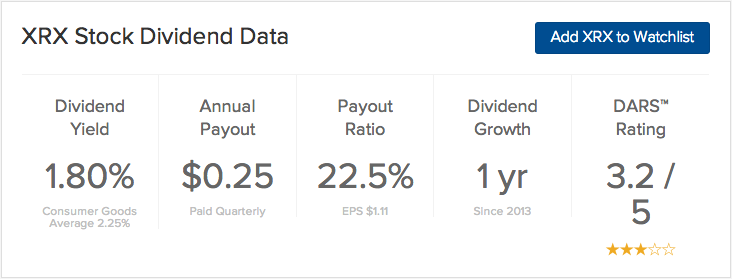
 Seth Wenig/APCEO Nick Woodman holds a GoPro camera in his mouth as he celebrates his GoPro's IPO. There were plenty of winners and losers this week, as the leading premium coffeehouse chain expanded its carbonated beverage offerings, and a disruptive video-streaming service got disrupted itself. Here's a rundown of the week's best and worst. GoPro (GPRO) -- Winner The initial public offering market got some fresh meat on Thursday when GoPro went public. The company behind the popular namesake cameras that extreme sports enthusiast like to wear was a hit. It priced at $24 a share -- at the high end of its initial range -- and that still wasn't enough. The stock opened at $28.65, closing out its first day of trading with a 31 percent gain. GoPro's growth has been stellar. Sales soared 87 percent last year to nearly hit $1 billion. However, there was a surprising decline in revenue during this year's first quarter. New GoPro investors are assuming that the most recent quarter's dip was a fluke. If it isn't a fluke, they can record their stumble in glorious high-def. Aereo -- Loser Sometimes it's the disruptor that gets disrupted. Aereo, the start-up service that offers local TV channels as a streaming platform, was pummeled by the U.S. Supreme Court. In a 6-3 decision, the court ruled that Aereo violated the copyrights of major TV networks by streaming their content without paying transmission fees. The move isn't the end for Aereo, but its prognosis has clearly deteriorated. Aereo thought that incorporating tiny remote antennas that subscribers can access online was similar enough to actual HD antenna ownership by individuals that its business model would be found to be legal. That didn't pan out, and consumers are unlikely to get a break this way from their ever-increasing cable and satellite TV bills. Starbucks (SBUX) -- Winner If you need to cool down in the Sun Belt, Starbucks has a few fizzy options. The java giant this week introduced its Fizzio line of carbonated beverages at 3,000 of its stores in the South. Fizzio is a line of handcrafted sodas that launched with three flavors (root beer, ginger ale and lemon ale), at 100 calories or less for 16 ounces. (Half as many calories as a Pepsi, and with cane sugar as the sweetener.) Starbucks is also letting customers pay 50 cents to have their iced teas and Refreshers beverages carbonated with the Fizzio machine. It's a smart call, giving non-coffee drinkers a new reason to walk into Starbucks. Steelcase (SCS) -- Loser Office furniture sales can be a good proxy by which to gauge the state of corporate America, but investors better hope that Steelcase is the exception.
Seth Wenig/APCEO Nick Woodman holds a GoPro camera in his mouth as he celebrates his GoPro's IPO. There were plenty of winners and losers this week, as the leading premium coffeehouse chain expanded its carbonated beverage offerings, and a disruptive video-streaming service got disrupted itself. Here's a rundown of the week's best and worst. GoPro (GPRO) -- Winner The initial public offering market got some fresh meat on Thursday when GoPro went public. The company behind the popular namesake cameras that extreme sports enthusiast like to wear was a hit. It priced at $24 a share -- at the high end of its initial range -- and that still wasn't enough. The stock opened at $28.65, closing out its first day of trading with a 31 percent gain. GoPro's growth has been stellar. Sales soared 87 percent last year to nearly hit $1 billion. However, there was a surprising decline in revenue during this year's first quarter. New GoPro investors are assuming that the most recent quarter's dip was a fluke. If it isn't a fluke, they can record their stumble in glorious high-def. Aereo -- Loser Sometimes it's the disruptor that gets disrupted. Aereo, the start-up service that offers local TV channels as a streaming platform, was pummeled by the U.S. Supreme Court. In a 6-3 decision, the court ruled that Aereo violated the copyrights of major TV networks by streaming their content without paying transmission fees. The move isn't the end for Aereo, but its prognosis has clearly deteriorated. Aereo thought that incorporating tiny remote antennas that subscribers can access online was similar enough to actual HD antenna ownership by individuals that its business model would be found to be legal. That didn't pan out, and consumers are unlikely to get a break this way from their ever-increasing cable and satellite TV bills. Starbucks (SBUX) -- Winner If you need to cool down in the Sun Belt, Starbucks has a few fizzy options. The java giant this week introduced its Fizzio line of carbonated beverages at 3,000 of its stores in the South. Fizzio is a line of handcrafted sodas that launched with three flavors (root beer, ginger ale and lemon ale), at 100 calories or less for 16 ounces. (Half as many calories as a Pepsi, and with cane sugar as the sweetener.) Starbucks is also letting customers pay 50 cents to have their iced teas and Refreshers beverages carbonated with the Fizzio machine. It's a smart call, giving non-coffee drinkers a new reason to walk into Starbucks. Steelcase (SCS) -- Loser Office furniture sales can be a good proxy by which to gauge the state of corporate America, but investors better hope that Steelcase is the exception. Related BZSUM Mid-Morning Market Update: Markets Open Higher; Time Warner Earnings Top Estimates #PreMarket Primer: Wednesday, November 5: Democrats Lose Control Of The US Senate
Related BZSUM Mid-Morning Market Update: Markets Open Higher; Time Warner Earnings Top Estimates #PreMarket Primer: Wednesday, November 5: Democrats Lose Control Of The US Senate  Bloomberg News
Bloomberg News 